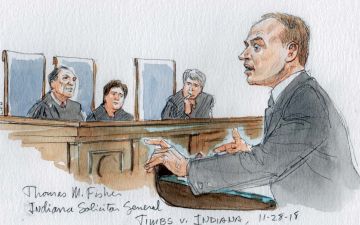Civil asset forfeiture is based on an ancient legal fiction that property can be guilty even if the owner is innocent. In a 1996 Supreme Court case, Tina Bennis didn't know her husband John used their car to have sex with a prostitute but lost the car anyway because the property was guilty even if she wasn't. Recently liberal and conservative justices have expressed doubts about CAF. Liberal and conservative groups—the ACLU and CATO—make common cause for reform. In the past several years, 26 states have passed fairer laws. But police can circumvent state reforms by having the federal government "adopt" the property and use the lax federal forfeiture standard to seize it. Reform in Congress also has failed. The bipartisan impetus for reform and spotty results create a favorable environment for meaningful change.
How Missouri's Drug Task Forces Avoid Accountability
Court records show that Missouri’s federally funded drug task forces have often failed to set up required oversight commissions, failed to hold oversight meetings in public and repeatedly failed to respond to Sunshine Act requests for public information.
'Cowboy' Tactics, Limited Oversight: How Missouri's Drug Task Forces Avoid Accountability
Court records show that Missouri’s federally funded drug task forces have often failed to set up required oversight commissions, failed to hold oversight meetings in public and repeatedly failed to respond to Sunshine Act requests for public information.
How a Quiet Police Lobbying Campaign Killed Civil Asset Forfeiture Reform in Missouri
No police officer or prosecutor testified in public against Rep. Shamed Dogan's bill to reform civil asset forfeiture tools. But their behind-the-scenes lobbying prompted the House Rules Committee chair to kill the bill.
St. Charles County Police Pressured Suspects In Private Tow Lot To Hand Over $10,000 In Cash
A data-driven investigation of civil asset forfeiture by St. Louis Public Radio reveals how police routinely seize large amounts of cash and are able to keep the money to build jails, construct new police headquarters, buy police cars and purchase computers and other electronic gear.
Timbs v. Indiana, Explained
Timbs v. Indiana was a case involving civil asset forfeiture decided by the U.S. Supreme Court in 2019. It is a significant step toward judicial reform of civil asset forfeiture practices.





